2021 is now coming to a close, with just a few weeks to go before 2022 lands in our lap, so this seems like a good time to wish you all a Happy Holidays!
Actually, let me revise that slightly, Happy Everything to you! ![]()
The New Arrivals!
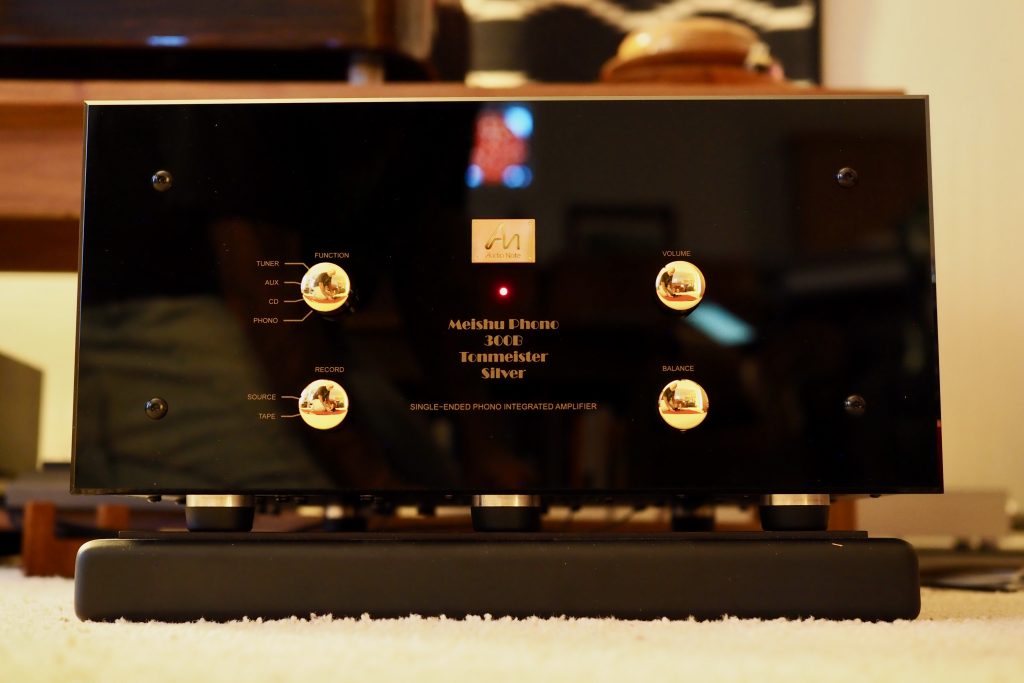
Audio Note (UK) Meishu 300B Phono Silver Tonmeister SET integrated amplifier. $19,300 USD.
The last few weeks have been absolutely thrilling here at Jeff's Place, with arrivals of exciting new audio components to tell you about like the Audio Note (UK) 300B Meishu Phono Silver Tonmeister SET integrated amplifier (Today's Fresh Catch HERE), ...
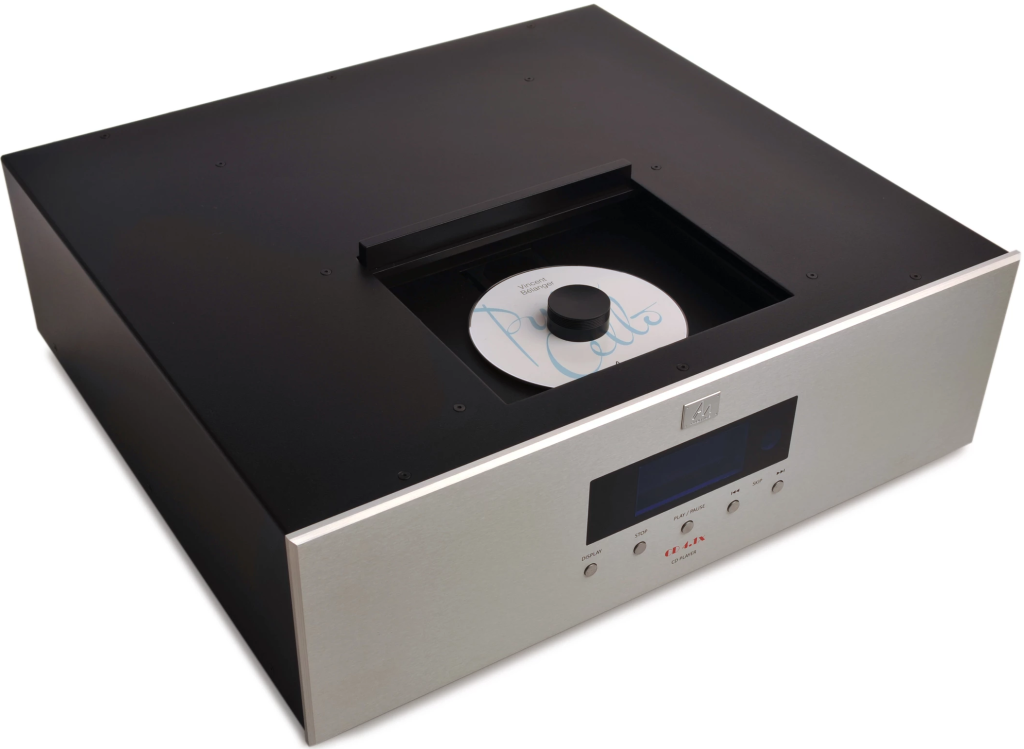
Audio Note (UK) CD 4.1x Level 3 CD player. $14,331 USD.
... the Audio Note (UK) CD 4.1x Level Three Red Book CD player (Today's Fresh Catch HERE), ...
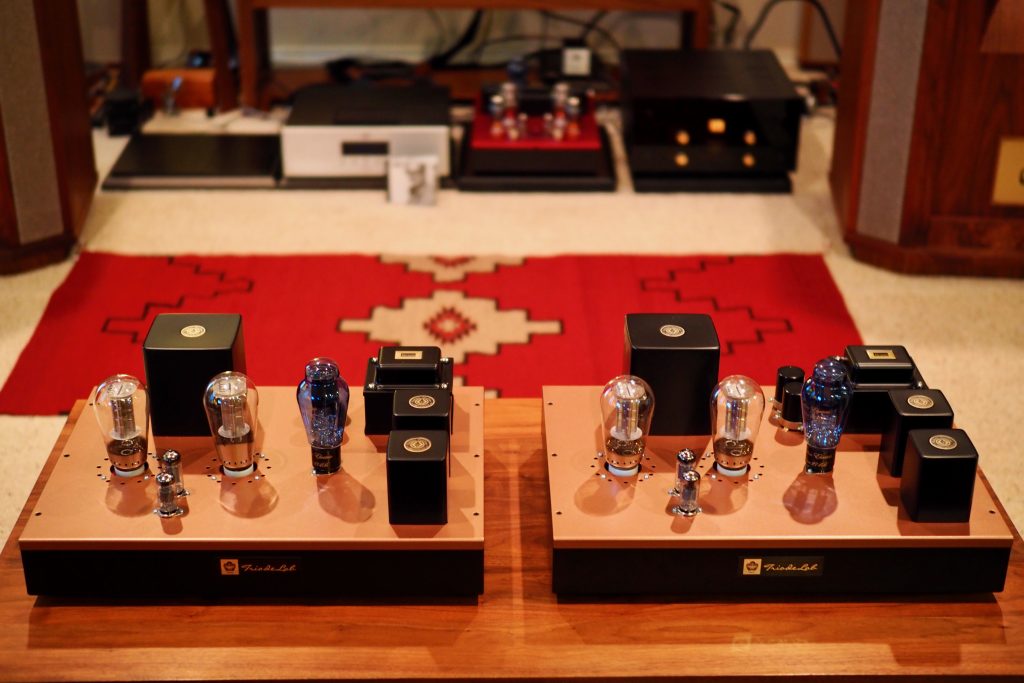
Triode Lab Parallel 2A3 Single-Ended-Triode RSR mono block amplifiers. $22,000 USD.
... and the Triode Lab Parallel 2A3 Single-Ended-Triode RSR Mono Block Amplifiers (Today's Fresh Catch HERE)!
In the past I've owned single-ended-triode (SET) amplifiers based on designs with 45, 2A3, 300B, and 845 / 211 vacuum tubes, and I've enjoyed every one of them.
I drifted away from SET amplifiers over the last so many years because I felt that their ability to drive my Tannoy Westminster Royal SE loudspeakers to live-like levels was sub-optimal.
My Single Ended Triode Renaissance!
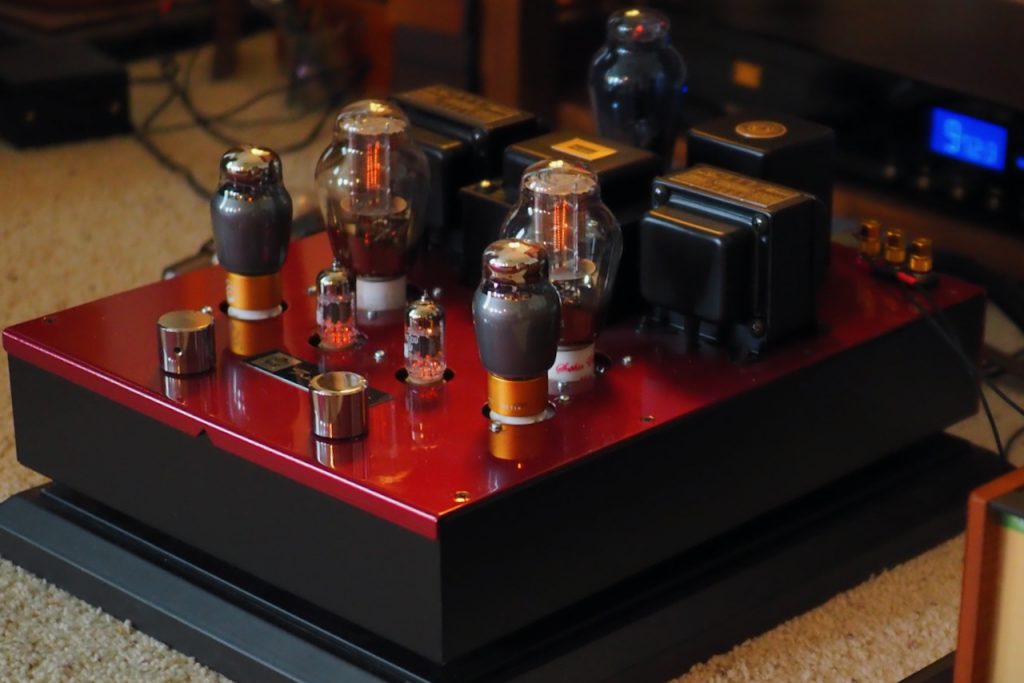
The Triode Lab 45 EVO integrated SET amplifier. $7500 USD.
That's all changed with the latest examples of SET amplifiers to come my way, starting with the award winning 2 watt Triode Lab 45 EVO SET integrated amplifier (more HERE) that showed it could easily drive my Westminsters to live-like volume levels on most recorded material (like 99.9% of it), and demonstrate superb musicality and stunning sound quality while doing it.
The abilities of the 45 EVO came as quite a shock to me, and it became my new reference for what was possible with my Westminsters. Frank and his team at Triode Lab have accomplished something remarkable with the 45 EVO, and it is a marvel of performance in the audio arts.
I'll tell you what, while all my earlier SETs had admirable traits that impressed me, this new crop of SETs from Triode Lab and Audio Note (UK) are in a different league of performance from the SETs that I've owned in the past.
Time has marched on, and performance has improved considerably in the world of SET amplification over the last decade, almost shockingly so if the Triode Lab 45 EVO SET integrated amplifier, the Audio Note (UK) 300B Meishu Phono Silver Tonmeister SET integrated amplifier, and the Triode Lab Parallel 2A3 SET RSR mono block amplifiers, are any indication.
Time has brought us more evolved circuits designs, better build quality, advancements in capacitors, resistors, and particularly the high-quality transformers used in these designs are at a whole new level of performance compared to most in the past.
What this means for us audio enthusiasts in practical terms is that SET amplifiers are able to realize their full performance potential, drive more challenging loudspeaker loads, and offer superb musicality and stunning sound quality. I find them to be very impressive indeed, a revelation in fact.
The Way It Used To Be
In the recording arts we evolved through the acoustic era (1877 to 1925), the electric era (1925 to 1945), the magnetic era (1945 to 1975), the digital era (1975 to present), and a great recorded music canon was created of musical performances that delighted listeners then, and on into the future.
The audio equipment for the playback of our recorded music canon also evolved with the eras of the recording arts.
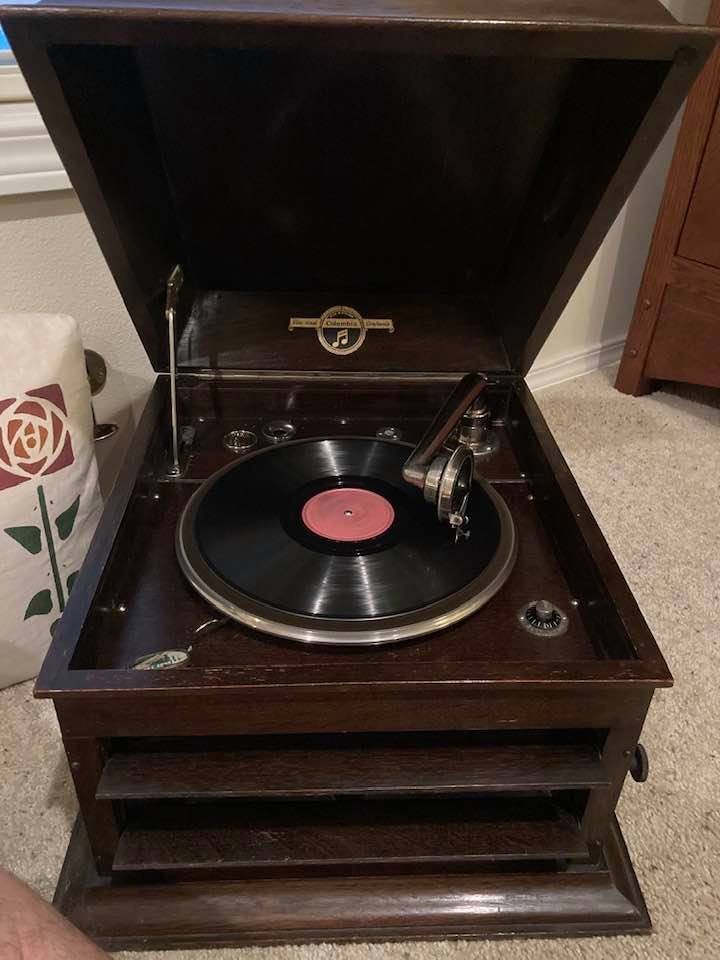
My 100 year old gramophone.
We went from listening to mechanical gramophones (like mine in the photo above), to listening to audio systems powered by electricity. Radios, mono systems, stereo systems, and finally multichannel systems.

My Grandfather's now ancient tabletop vacuum tube radio.
I find the history and evolution of the peaks in audio research & development to be fascinating, and when I met Peter Qvortrup (Audio Note (UK)) - who possesses an extensive knowledge of the history of audio - I knew I had met a kindred spirit, and learned a lot about the history of the eras of the recording arts, and the evolution of the audio arts from him.
Peter considers the key points of development in the audio music reproduction chain to have been 1950 - 1960 for the recording quality peak (the magnetic era of the recording arts), the software quality peak occurring 1950 - 1960 (magnetic tape and records), the amplification quality peak occurring 1920 - 1930 (single-ended-triode amplification), and the loudspeaker quality peak occurred in late 1930s (high-sensitivity loudspeakers), which was led by cinema sound research & development by companies like Western Electric, Altec, and Siemens Klangfilm, for example.
These periods that Peter refers to as key development points in sound recording and audio are often referred to as "The Golden Age of Audio".
Let me use an example of one of my favorite musical and audio heroes from the Golden Age of Audio, Dr. Leopold Stokowski (more HERE).
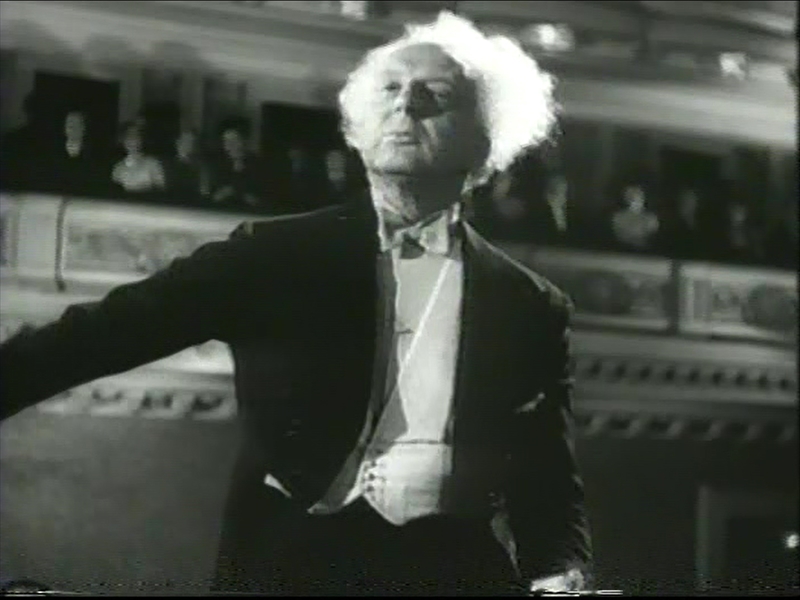
Leopold Stokowski at Carnegie Hall 1947 (public domain photo)
It is fairly common knowledge with those who are familiar with music history that Leopold Stokowski was one of the world's leading conductors during his lifetime, and conducted numerous symphony orchestras, including of the Cincinnati Symphony Orchestra, the Houston Symphony Orchestra, the NBC Symphony Orchestra, the New York Philharmonic Symphony Orchestra, the Philadelphia Orchestra, and the Symphony of the Air, as well as others.
Leopold Stokowski was a remarkable and creative individual and musician, who was also very interested in the recording and reproduction of music, and had enormous influence upon the world of music, film, recording, audio engineering, and even culture, during his lifetime.
A fascinating aspect of Leopold Stokowski's life, and less commonly known, is that early in his career he became interested in the technical aspects of the recording and playback of music, something that most conductors of the time eschewed.
To aid Leopold Stokowski in his interests, Professor Charles Weyl at the University of Pennsylvania created a tailored curriculum for him that focused on what he needed to know about acoustics and electrical engineering in order to more effectively participate in guiding the technical activities of the audio engineering that he had become involved in.
The University of Pennsylvania eventually awarded Leopold Stokowski an honorary doctorate for his accomplishments in music, audio engineering, and film.
Leopold Stokowski worked closely with recording engineers during the acoustic horn recording era (1877 to 1925), the electrical recording era (1925-1945), the "modern" magnetic recording era (1945 to 1975) until his death in 1977 at the age of 95, always striving for improved fidelity of recorded music. He heard it all.
Leopold Stokowski was very involved in advancing the recording and playback of music and worked closely with audio engineers from Altec Lansing, Bell Labs, Disney, RCA, and others, to advance the recording arts for records, film, and radio broadcast.
Leopold Stokowski loved experimenting with recording and playback technology and was involved in the development of multi-track recording used in some of the first stereo recordings.
He also collaborated with RCA in the use of a multi-track film recorder for the movie 100 Men and a Girl, in which Stokowski played a speaking part, and also with the Fantasound multichannel sound system developed by RCA and Disney engineers for the famous animated movie Fantasia.
One of the things that Leopold Stokowski was known for was setting up a recording and playback system in a room adjacent to where his orchestras would play. While the orchestra would play Leopold would compare what he was hearing from the orchestra's performance to what he was hearing being recorded and played back in the adjacent room. He would then suggest modifications to the recording and playback chain components' design to more accurately portray what he was hearing from the live performance.
Leopold was not the only one to develop the audio recording and playback chain of components by comparing their performance to live music during The Golden Age of Audio, in fact most notable designers from the period did the very same sort of thing.
In the twenty years before Dr. Stokowski's death in 1977, as a child I enjoyed listening to music on my parents vacuum tube console systems, and my own integrated record player, but my true interest in audio really began to bloom in the early to mid-1970s, a time period when audio began shifting from that Golden Age of Audio design focus where comparison to live music was paramount in developing components, to something different.
During those following decades, like many of us gentlemen of that period, I got caught up in a form of audiophilism that was developing that focused on a 'different kind of sound quality'.
Listeners, influenced by the audio press of the day, began to focus on listening to the finest recordings of the magnetic era, which began a partial de-evolution of the audio arts by focusing on prioritizing the emphasis of the visuospatial elements inherent in stereo sound recording during the magnetic era of the recording arts.
Fascinated by these visuospatial cues in these recording, I and many others, explored the 'virtues' of soundstage, imaging, and the like, that we saw touted in the audio media, and as such much of the audio industry followed that emphasis down a blind alley that almost destroyed enthusiast audio with "audiophile-style music systems".
During that period all one needed to do was attend a few audio shows, and listen to how many of the those "high-end" audiophile offerings that were amusical in comparison to what live music sounds like, to truly drive the point home that enthusiast audio had entered into a period of amusicality.
It was a sobering and heart-breaking realization to hear what had happened in enthusiast audio, and it was obvious that audio equipment of that period that overly emphasized visuospatial aspects of sound reproduction didn't play recorded music very well at all.
A lot of audio equipment from that period sounded synthetic, amusical, unsatisfying, and were often obscenely expensive. That's not a recipe for long-term success, particularly for attracting potential customers who actually wanted to enjoy listening to music.
Quite a number of enthusiasts were tired of being on an audio merry-go-round of buying and selling expensive audio components in hopes of getting a terrific home audio system, but never could achieve that desire. Some abandoned the hobby altogether, or shifted their interests towards vintage audio design sensibilities where playing music well was the focus of their design criteria.
In the press I remember reading numerous articles about how the 'high-end' audio industry was dying, and dissatisfied enthusiasts were leaving the hobby in droves.
Yet there were people in the audio industry who recognized that well-balanced high-performance audio designs that played music very well and still had great sound quality were the direction the industry needed to go in.
Those companies today are prospering, like Peter Qvortrup's Audio Note (UK), or Nelson Pass' Pass Labs and First Watt companies in the USA, and of course, some others around the world.
Another good example of impressive advancements are the designs of Frank Ng and his design team at Triode Lab in Canada.
The Importance of the Recorded Music Canon of Planet Earth
While it was my perception that something was amiss in parts of the audio industry in those decades from the 1970s until the last few decades, it took Peter Qvortrup playing digital transfers of 78 records from the acoustic and electric eras of the recording arts for me in his home in Brighton, England, before it all 'clicked' into place.
Originally I was interested in audio because I wanted to enjoy listening to music. Then I got sidetracked for a while due to an emphasis on visuospatial effects in much of the enthusiast audio sector, but I became disenchanted with much of that equipment's lack of being able to play music well.
Then when Peter played those 78 transfers for me, the experience of what I had heard percolated for a while, and then it dawned on me.
I wanted to listen to the greatest musical performances ever recorded, and not just the best recordings of music.
The immense importance of our entire recorded music canon as a cultural treasure that has been gifted to us by the advent of the recording arts as we evolved through the acoustic era (1877 to 1925), the electric era (1925 to 1945), the magnetic era (1945 to 1975), the digital era (1975 to present), cannot be overstated.
As audio enthusiasts and music lovers our audio systems must be able to play all of those recorded musical performances of any fidelity from all the eras of the recording arts, and be able turn them into riveting listening experiences in order for us to fully realize the great gift that resides in our recorded music canon, from the earliest times until today.
A New Golden Age of Audio
Personally, I believe we are entering into a New Golden Age of Audio with audio systems that can play anything from any time and turn it into an intense musical experience, and I am hearing exactly that in these latest designs from individuals with that expansive, historic, and forward looking vision of what audio can be to make it inclusive of music performances from all the recording eras, like Peter, Nelson, Frank, and others are doing.
Listening to Peter's remarkable CD players (CD 2.1c/II and CD 4.1x) have been real ear-openers for me, as they opened up the entirety of our recorded musical canon to me, and have presented it as convincing musical performances that transcend the limitations inherent in all the eras of recording.
I can listen to the magnificent recordings of Caruso in the acoustic era of recording, or Duke Ellington, Bessie Smith, or Louis Armstrong, in the electric era of recording, or Bill Evans, or Joe Pass, or Jim Hall, or Ed Bickert in the magnetic era of recording, and enjoy them all equally in the highest fidelity those eras have to offer.
What is to Come
When I started writing this article, my plan was just to tell you about how impressed I am with the new arrivals of the Audio Note (UK) 300B Meishu Phono Silver Tonmeister SET integrated amplifier, the Audio Note (UK) CD 4.1x Level Three Red Book CD player, and the Triode Lab Parallel 2A3 Single-Ended-Triode RSR mono block amplifiers, how grandly they play music, and how remarkable their sound quality is.
When I started considering what I was experiencing from these audio components, what they enable my audio systems to do when playing music from all the eras of our recorded music canon, I felt inspired to take a quick historic look at where we came from, where we are, and where we are going in audio.
Many thanks to Peter, Nelson, Frank, and all of you who have walked along together with me on this path to musical appreciation and illumination.
We learn, we grow, we enjoy the music, and we gain a greater appreciation of all those musical giants that have walked Planet Earth that we are so fortunate to be able to hear on a fine audio system.
Ok, I'd better stop there, and go off and celebrate my birthday today. It's been a great 64 years of hearing the music!
I'll have lots more to tell you in the future, and 2022 looks to be a wonderful year for music and audio.
As always, thanks for stopping by!



























